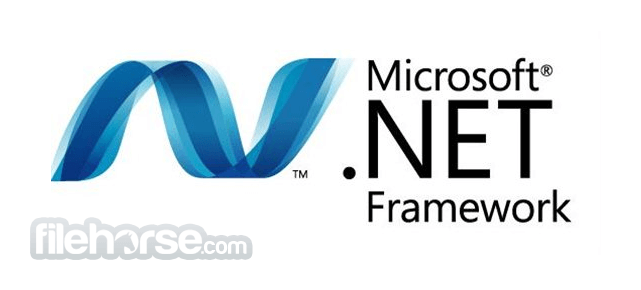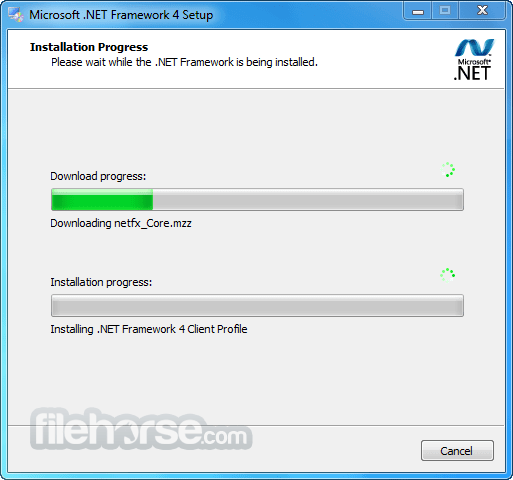-
Latest Version
.NET Framework 2.0 SP2 LATEST
-
Review by
-
Operating System
Windows XP / XP64 / Vista / Vista64 / Windows 7 / Windows 7 64
-
User Rating
Click to vote -
Author / Product
-
Filename
NetFx20SP2_x86.exe
-
MD5 Checksum
c64fd1f972822ed84378c7058fea0744
After .NET Framework Version 1.1 that arrived in April of 2003, version 2.0 became an integral part of Microsoft’s Visual Studio 2005, Microsoft SQL Server 2005 and Biz talk 2006, with standalone version being offered for download from late January of 2006 (it was also a part of Windows Server 2003 R2 package). Among many new additions that version 2.0 brought, most notable was integration with SQL Server, new API changes that unlocked new capabilities for Visual Studio apps, .NET Micro Framework support, and many more.
Some of this version’s main features are:
- Improved caching
- Support for a wider range of browsers and devices
- Improved application deployment
- Improved scalability and better performance
- Better caching
Enhanced Performance: This version of the .NET Framework has been optimized for better performance, ensuring that your applications run faster and more efficiently.
Cross-Platform Development: While .NET traditionally focused on Windows, this iteration introduces cross-platform capabilities, allowing you to develop applications for Windows, macOS, and Linux.
Modern Language Support: .NET (2) Version includes support for modern programming languages like C#, F#, and Visual Basic, making it adaptable to a wider range of developer preferences.
Improved Security: Security is a top priority, and this version includes enhancements such as built-in security features, secure coding practices, and tools to help developers write more secure code.
Expanded Libraries: It offers an extensive set of libraries, including ASP.NET for web development, Windows Forms for desktop applications, and Xamarin for mobile app development.
User Interface
The .NET Framework itself doesn't have a user interface as it's primarily a development framework. However, the development environment, such as Visual Studio, which developers often use with .NET Framework, offers a user-friendly interface with various tools and features to facilitate coding, debugging, and testing.
Installation and Setup
Download: Visit the official Microsoft website or FileHorse to download the installer package for .NET Framework (2) Version.
Run Installer: Execute the downloaded installer. It will check for prerequisites and prompt you to agree to the license terms.
Installation: Once you agree to the terms, the installer will download and install the necessary components. This may take a few minutes.
Completion: After installation is complete, you'll receive a confirmation message, and .NET Framework (2) Version will be ready for use.
How to Use
Choose Your Development Environment: Select a development environment, such as Visual Studio or Visual Studio Code, that supports .NET development.
Create a Project: Start a new project and choose the appropriate project type (e.g., Windows Forms, ASP.NET Core, Xamarin).
Write Code: Write your application code using the programming language of your choice (C#, F#, Visual Basic, etc.).
Debug and Test: Use built-in debugging tools to find and fix issues in your code. Test your application on different platforms as needed.
Deployment: Once your application is ready, you can deploy it to your target platform, whether it's a Windows desktop, web server, or mobile device.
FAQ
What is the .NET Framework used for?
.NET Framework is used for developing Windows applications, including desktop, web, and mobile applications. It provides libraries and tools to streamline development.
Is .NET Framework (2) Version backward compatible?
Yes, it maintains backward compatibility with previous versions, ensuring that older applications can still run without issues.
Can I develop cross-platform applications with .NET Framework (2) Version?
Yes, this version introduces cross-platform capabilities, allowing you to develop applications for Windows, macOS, and Linux.
What programming languages are supported by .NET Framework (2) Version?
It supports modern programming languages like C#, F#, and Visual Basic, among others.
Is .NET Framework (2) Version free to use?
Yes, .NET Framework (2) Version is free to download and use, making it accessible to a wide range of developers.
System Requirements
- OS: Windows Server 2003, Windows XP
- Software: Install KB 835732 before installing .NET Framework 2.0 Service Pack 1.
- Processor: 400 MHz Pentium processor or equivalent (Minimum); 1GHz Pentium processor or equivalent (Recommended)
- RAM: 96 MB (Minimum); 256 MB (Recommended)
- Hard Disk: Up to 500 MB of available space may be required
- CD or DVD Drive: Not required
- Display: 800 x 600, 256 colors (Minimum); 1024 x 768 high color, 32-bit (Recommended)
- Enhanced performance and optimization.
- Cross-platform development support.
- Modern language support.
- Improved security features.
- Extensive libraries for various application types.
- Learning curve for beginners.
- Larger file sizes for cross-platform deployments.
- Some legacy applications may require updates for compatibility.
.NET Framework (2) Version builds upon its rich history and brings new features and cross-platform capabilities to the table. It remains a go-to choice for developers looking to create Windows applications of all types. With enhanced performance, modern language support, and improved security features, it provides a robust foundation for application development.
While it may have a learning curve for newcomers, its extensive libraries and cross-platform support make it a valuable tool in the developer's toolkit. Whether you're building desktop software, web applications, or mobile apps, .NET Framework (2) Version is a reliable choice to consider for your development needs.
 OperaOpera 109.0 Build 5097.59 (64-bit)
OperaOpera 109.0 Build 5097.59 (64-bit) iTop VPNiTop VPN 5.4.0 - Fast, Safe & Secure
iTop VPNiTop VPN 5.4.0 - Fast, Safe & Secure PhotoshopAdobe Photoshop CC 2024 25.7 (64-bit)
PhotoshopAdobe Photoshop CC 2024 25.7 (64-bit) iAnyGoTenorshare iAnyGo 4.0.15
iAnyGoTenorshare iAnyGo 4.0.15 Opera GXOpera GX 109.0.5097.62 (64-bit)
Opera GXOpera GX 109.0.5097.62 (64-bit) Adobe AcrobatAdobe Acrobat Pro 2024.002.20687
Adobe AcrobatAdobe Acrobat Pro 2024.002.20687 BlueStacksBlueStacks - Play on PC 5.21.150
BlueStacksBlueStacks - Play on PC 5.21.150 Hero WarsHero Wars - Online Action Game
Hero WarsHero Wars - Online Action Game Data Recovery4DDiG Windows Data Recovery 9.8.6
Data Recovery4DDiG Windows Data Recovery 9.8.6 TradingViewTradingView - Trusted by 60 Million Traders
TradingViewTradingView - Trusted by 60 Million Traders





Comments and User Reviews